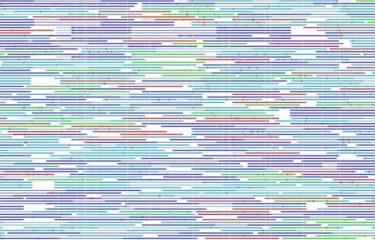A research team from the Institut Pasteur in association with the French National Research Institute (CNRS) has just characterised a molecule that can inhibit the formation of biofilms, agglomerates of bacteria attached to surfaces, which are the source of a large number of nosocomial diseases. In an article published in PNAS, researchers have shown that this molecule is a complex sugar secreted into the culture medium by bacteria that cause urinary tract infections. If this molecule is applied to various materials such as plastic or glass, it prevents biofilm formation of a wide spectrum of pathogenic bacteria. Many applications have been envisaged, such as the treatment of prostheses and catheters used during surgery, as well as applications for industrial surfaces such as sewage systems or pipes in air-cooled towers.
Presse release
Paris, september 4
When bacteria populations bond together and grow on a solid surface, they form what is called a biofilm. In these structures, bacteria acquire new properties such as a strong resistance to antibiotics and to attacks from the immune system. When the biofilm is attached to a prosthesis or a catheter, it can constitute a reservoir of pathogenic bacteria that are at the root of many nosocomial infections. A large amount of research has been undertaken to identify strategies to prevent biofilm formation.
It was while studying the biology of uropathogenic strains of the bacteria called Escherichia coli that the researchers from the Genetics of biofilm laboratory, led by Jean-Marc Ghigo at the Institut Pasteur, found a possible solution to the problem of the formation of undesirable biofilms. Uropathogenic Escherichia coli have to cross through the whole of the human intestinal system before to colonize the urogenital tract where they can cause infections such as cystitis. By testing the ability of uropathogenic E. coli (UPEC) to form biofilms when mixed with other bacteria, researchers found that they secrete a complex sugar (polysaccharide) that inhibits the formation of these biofilms. This property could play an essential role in the colonization ability of these bacteria.
Researchers also showed that applying a solution containing polysaccharide to materials commonly used in medical devices such as PVC or polycarbonate is sufficient to confer it powerful anti-adhesive properties against many pathogenic bacteria, including Staphylococcus aureus or Pseudomonas aeruginosa. This could have numerous applications, both with regard to public health and to industry. Coating using this product on biomaterials that are used in prosthesis, contact lenses or dialysis filters, might prevent biofilms from forming and therefore limiting the proliferation of pathogenic bacteria. In industry, it is also possible to envisage to limit undesirable bacteria colonization.
Sources
«Broad-spectrum biofilm inhibition by a secreted bacterial polysaccharide» Proc Natl Acad Sci U S Août 2006.
Jaione Valle (1), Sandra Da Re (1), Nelly Henry (2), Thierry Fontaine (3), Damien Balestrino (4),
Patricia Latour-Lambert (1) et Jean-Marc Ghigo (1)
1. Groupe de Génétique des Biofilms, Institut Pasteur (CNRS URA 2172)
2. Laboratoire Physico Chimie Curie (CNRS UMR 168), Université P. et M. Curie
3. Unité des Aspergillus, Institut Pasteur,
4. Laboratoire de Bactériologie, Faculté de Pharmacie, Université d’Auvergne, Clermont-Ferrand
Contact press
Institut Pasteur Press office
Nadine Peyrolo ou Bruno Baron
+33 (0)1 44 38 91 30 - bbaron@pasteur.fr
CNRS Press office
Muriel Ilous
+33 (0)1 44 96 43 09 – muriel.ilous@cnrs-dir.fr




